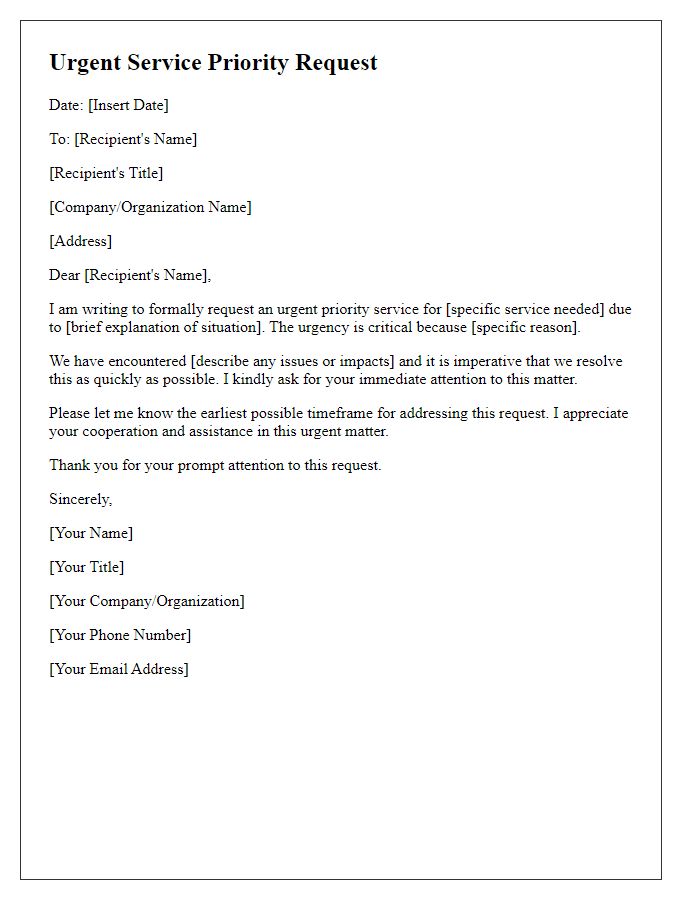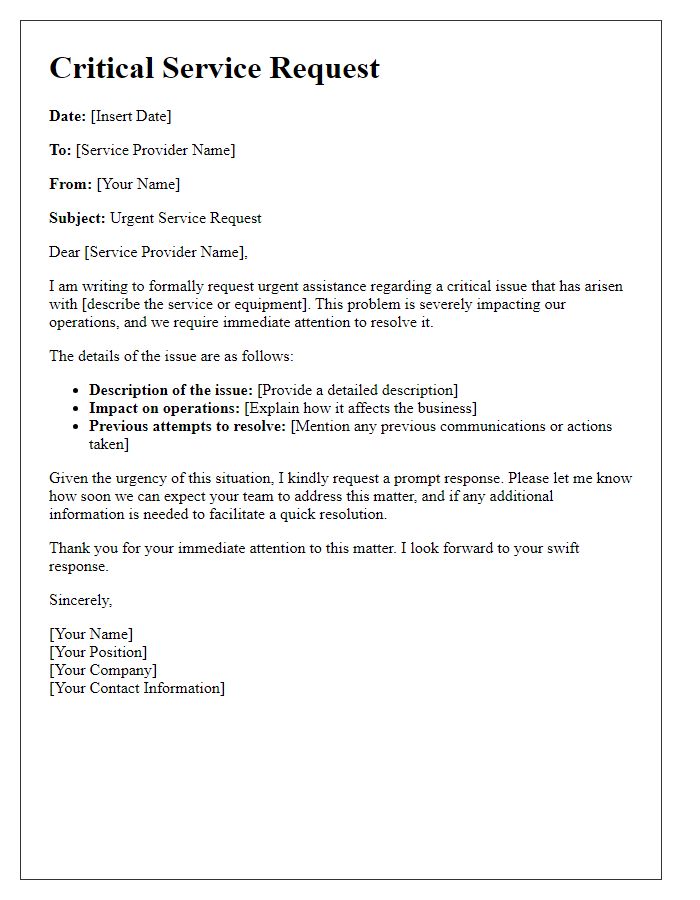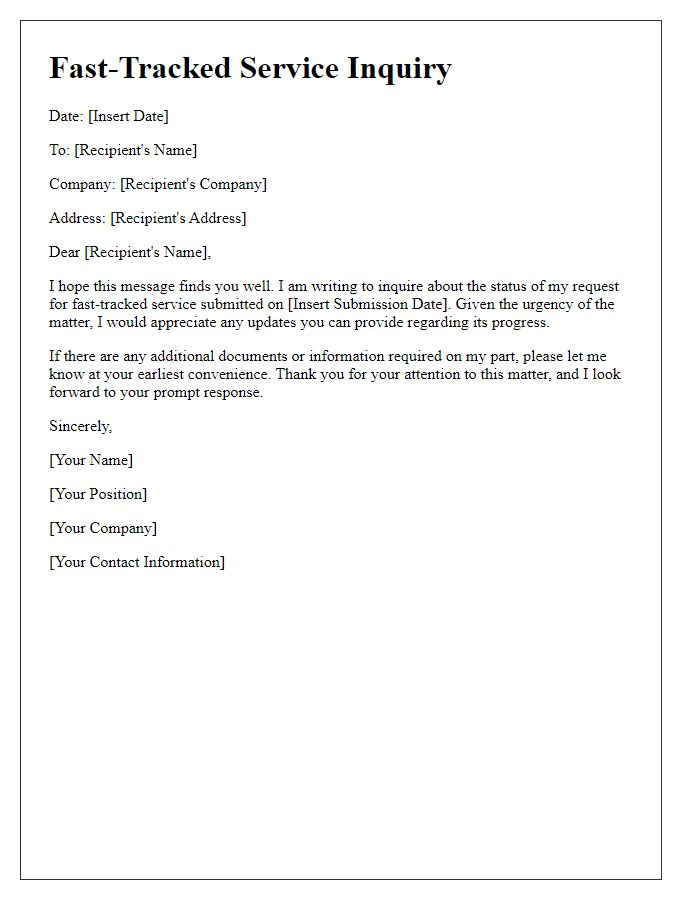Are you looking to streamline your requests for priority services? Crafting a clear and concise letter can significantly enhance your chances of receiving prompt attention. In this article, we'll walk you through the essential elements of a service priority request letter, ensuring it captures the recipient's attention while conveying your needs effectively. Stick around to discover tips, templates, and examples that will make your letter stand out!

Concise Subject Line
Concise subject lines for service priority requests can significantly enhance communication efficiency. For instance, "Urgent: Immediate Assistance Required for Account Issue" or "Priority Request: Technical Support for Online Platform" clearly convey urgency and specify the type of assistance needed. These subject lines help recipients quickly identify the nature of the request, improving response time and prioritization of service requests.
Clear Request Justification
Service priority requests require clear justification to ensure prompt attention and resolution. Essential elements may include critical operational impact, such as potential revenue losses due to system downtime, which can reach thousands of dollars per hour for businesses. Specific examples might include software outages affecting customer transactions, or maintenance needs of high-priority equipment in healthcare settings, resulting in delayed patient care. Additionally, detailing the urgency of the request, such as a deadline tied to industry regulations or compliance mandates, emphasizes the necessity for a fast response. This structured documentation aids in the effective allocation of resources and prioritization of service requests within organizations.
Specific Service Details
Customers seeking urgent assistance for service issues often need specific service details to expedite requests. Essential information includes service type, such as internet connectivity or technical support, and identifying numbers like account or service order numbers. Additionally, a succinct description of the issue is crucial--detailing symptoms like slow speeds or error messages helps streamline the troubleshooting process. Stipulating urgency levels, such as "critical" for business interruptions, can further prioritize requests. Other relevant details may include contact information, preferred callback times, and any previous correspondence reference numbers to provide context and improve resolution efficiency. Accurate and comprehensive details ensure that services are prioritized effectively, leading to faster resolutions.
Urgency Explanation
Urgent service requests require prompt attention to resolve critical issues impacting productivity or safety. Scenarios such as network outages can lead to significant downtime (with potential losses exceeding $10,000 per hour for businesses), while malfunctioning equipment (like servers or manufacturing machinery) can halt operations entirely. High-stakes environments, such as hospitals, necessitate immediate service to ensure patient health, where delays can have severe consequences. Timely intervention not only mitigates risks but also maintains customer satisfaction and trust, reflecting the organization's commitment to quality service delivery.
Contact Information
Service priority requests facilitate timely assistance during critical situations. Providing accurate contact information is essential for ensuring prompt communication. Include full name, email address, and phone number for direct outreach. Designate a preferred contact method; prioritize response time for emergencies. Specify business hours if applicable. Additionally, outline relevant case numbers or identifiers for quick reference, ensuring service teams can efficiently address the request. Include alternate contacts if necessary to avoid delays.













Comments